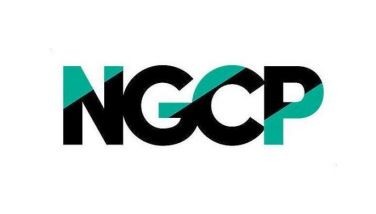Pushing data to the cloud
As soon as the floods of Sept. 26 started to rise, Metro Manila thought long and hard about securing its business and personal information assets. The murky and muddy waters from the Sierra Madre and the metropolis’ own sludge inundated storage facilities housing millions of pages of critical documents – from bank records, to business contracts, to legal documents.
The fact is that more of us are prepared to protect paper documents and other storage media against fire. Short of keeping all our important documents in watertight (and fireproof) containers, it seems we don’t have a prayer; technology, however, is on our side.
Keeping files in electronic format is convenient, portable, and cheaper than retaining “hard copies” or analogue containers of our information. The ubiquity of the digital age is so profound that it’s almost impossible to think how we lived before word processors, spreadsheets, email, MP3, and high-definition video. There should be no problem with keeping digital files we generated through the years and converting paper documents and pictures for electronic storage, but how about the more important paper files that represent legal obligations or records? Does it make sense to go through conversion? Will the digital version have the same weight as the paper original? This time, the law is on our side.
The Electronic Commerce Act of 2000 (Philippine Republic Act No. 8792), its Implementing Rules and Regulations, and the Rules on Electronic Evidence (A.M. No. 01-7-01-SC) already give electronic data, messages, and documents legal status in the Philippines. A bit of a caveat though: the law only intends to validate the form, not the content of the document. That being said, electronic reproductions faithful to the original paper document or original digital file now enjoy their rightful place under the Philippine legal system.
To take advantage of the law, the management of electronic documents should demonstrate authenticity and integrity of data or information to a satisfactory degree. This involves the creation and application of a robust and practical document management policy.
After converting paper to digital format and storing it in electronic media such as DVDs or other optical discs and hard drives, how do we further protect our information assets? Surely computers and even backup tapes are vulnerable to floods and other disasters as well. The answer is in the “cloud” – not the kind that brought us the inordinate amount of rain over the past few weeks but the kind that we connect through the Internet.
The “cloud” refers to the web, where applications are served via a browser and data is stored offsite. The term comes from the representative symbol of the Internet in computer network diagrams.
Now that data storage disks are so cheap (you can get a one-terabyte or 1,000-gigabyte hard drive for less than P 8,000), why bother with online storage? The main reason, really, is the practicality of it – data placed in an online storage is readily accessible (wherever there is Internet access) and protected from local events such as fire, floods, and other calamities.
There’s a host of online storage providers such as Amazon S3 and Windows Live Skydrive ™. All of these cloud stores can be accessed using a simple web browser like Internet Explorer, Firefox, Opera or Safari.
Companies can also choose to get online storage through a remote server that can be operated independently. With this type of setup, a simple FTP (file transfer protocol) or WebDAV (web distributed authoring and versioning) service can be used to manage online data.
Online storage does have its drawbacks – users will have to give up some control over how the infrastructure that supports the application works. Another concern is security and access; are you ready to send and store sensitive documents over the Internet? The capability and survivability of the company storing your data is also a point of consideration.
There are several practices to mitigate the risk of online storage. Of course, it makes sense to do due diligence when shopping for a storage provider. Make certain file transport is encrypted using HTTPS, SFTP, or SSH so your data traffic isn’t transmitted in the clear. HTTPS (Secure Hypertext Transfer Protocol) is used to deliver encrypted pages to the web browser, while SFTP or Secure FTP is the encrypted version of the mature File Transfer Protocol. SSH or Secure Shell is network protocol that provides a secure channel between two networked devices. It’s also helpful for your security to encrypt the data itself before sending it to remote storage. There are several commercial and open source applications that can encrypt files on the fly (TrueCrypt and FreeOTFE are popular in this field).
To ensure your data enjoys high availability, it’s best to have at least two copies of your files for online and offline use (in case Internet is not available). Making this work usually involves the use of a synchronization or backup application. Again, many are available on the Internet, from freeware for limited personal use, to enterprise-grade software for the more critical business data set.
File synchronization or “syncing” can also be employed to copy files across two or more computers. If the idea of keeping your data in a third-party server does not sit well with you, then this might be an option. Several applications are available like DropBox, Syncplicity, rsync, and Windows Live Sync that replicate selected files and folders across several computers you own.
The data explosion we’re experiencing today can be contained by utilizing storage that is universally available. The increasing reliability of broadband connectivity to the internet makes cloud storage a viable alternative backup, if not a primary file space option.
Mobility, accessibility, and security are some of the arguments for cloud storage. Although not yet adopted as a pervasive technology among Filipinos, its use globally is rising.
So the next time flood waters or any other damaging event threatens your documents, either on paper or electronic format, you can focus on saving other essential things and feel secure in the thought that your information is just a password away.
(Ronald F. Gonzales is a director for IT Advisory of Manabat Sanagustin & Co., CPAs, a member firm of the KPMG network of independent member firms affiliated with KPMG International, a Swiss cooperative.
The views and opinions expressed herein are those of the author and do not necessarily represent the views and opinions of KPMG in the Philippines. For comments or inquiries, please email [email protected] or [email protected])
Windows Live Skydrive and Windows Live Sync are trademarks of Microsoft Corporation. Amazon S3 is a trademark of Amazon Web Services.
- Latest
- Trending




























